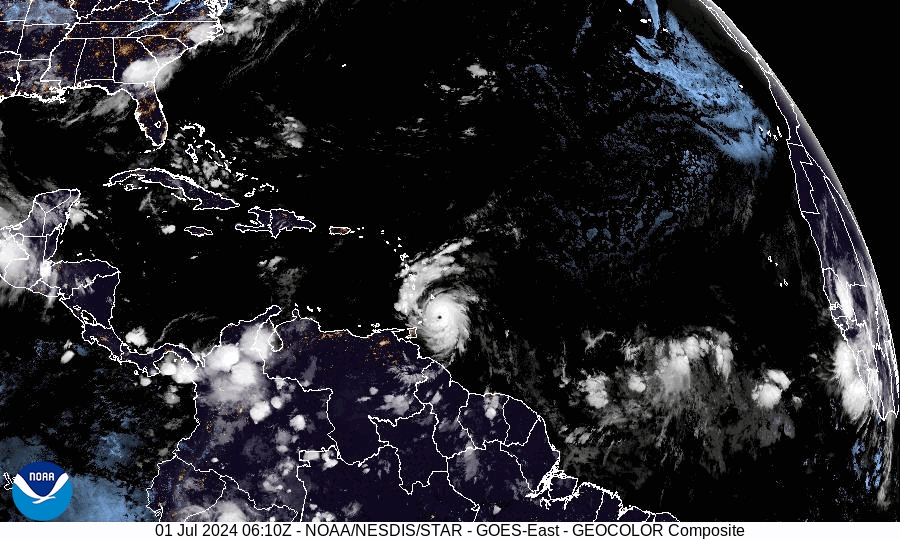The eye of Hurricane Beryl made landfall on Grenada’s Carriacou Island Monday morning with sustained winds of 150 mph — strengthening dangerously close to Category 5 status.
“This is an extremely dangerous and life-threatening situation,” said the National Hurricane Center.
Residents in the Grenadine Islands were warned to remain sheltered through the passage of the Category 4 hurricane.
The wind damage could be catastrophic to the southeastern Caribbean islands as Hurricane Beryl moves through, along with a life-threatening storm surge that could raise water levels as much as 6 to 9 feet above the normal tide levels.
The storm is expected to produce 3 to 6 inches of rainfall across Barbados and the Windward Islands through Monday afternoon, which could lead to flash flooding.
There have already been multiple reports of downed trees, flooded streets, power outages and storm surge flooding in the Grenadines, Grenada, Barbados and Tobago, according to the National Hurricane Center.
Hurricane warnings were in effect for most of the Windward Islands ahead of the storm, while Jamaica is under a hurricane watch. Martinique, Trinidad and St. Lucia are still under a tropical storm warning.
Hurricane Beryl is expected to weaken some as it moves through the central Caribbean, but the National Hurricane Center said it believes the storm will maintain its hurricane status.
According to The Associated Press, the last strong hurricane to hit the southeastern Caribbean islands was Hurricane Ivan, which killed dozens of people in Grenada 20 years ago.
Beryl is the first Atlantic hurricane of the season, and experts said it’s unusual for a storm of this magnitude to develop this early. Multiple outlets reported it was the first Category 4 storm on record for the month of June.





